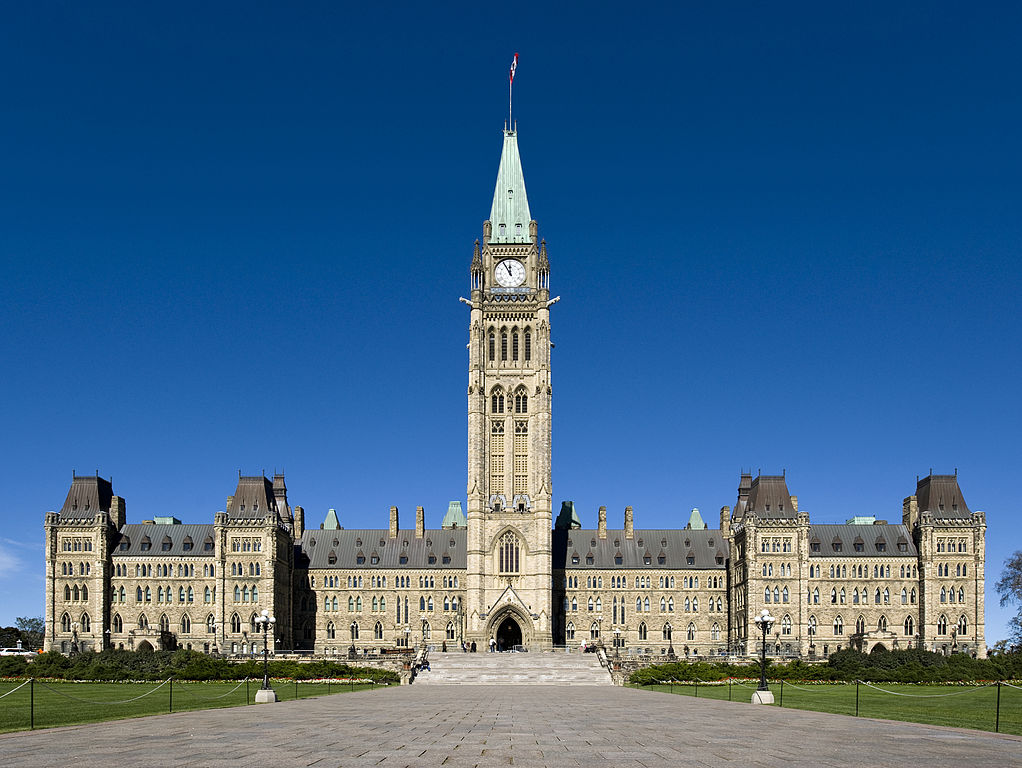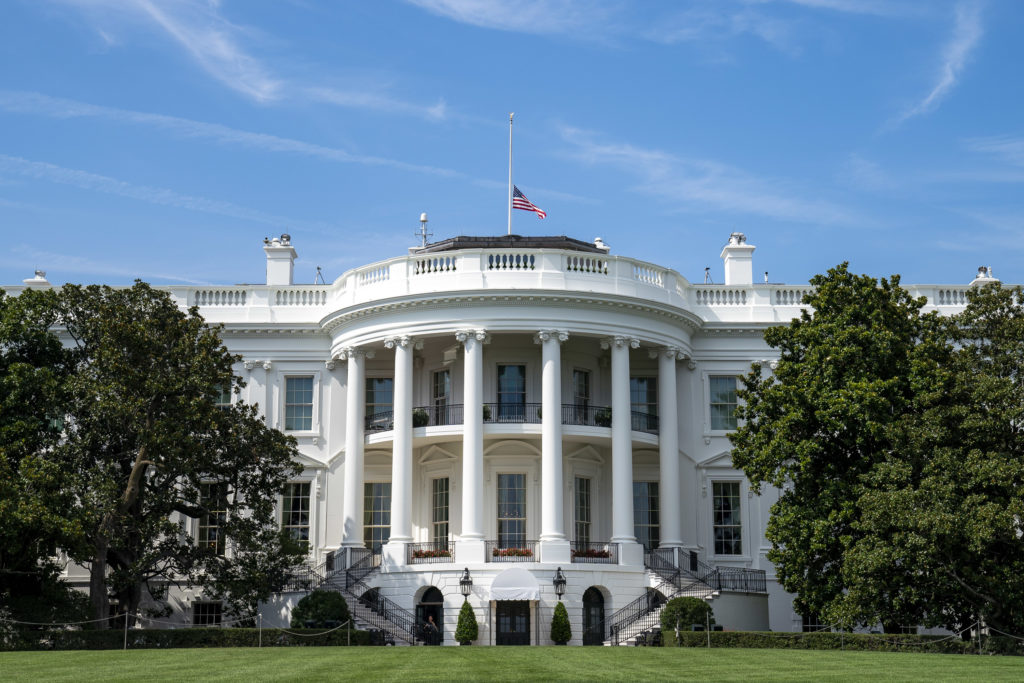Canada’s Intelligence Reform: A Closer Look at Pending National Security Legislation
Canada is undertaking the most substantial reforms to its national security law since 1984, when its first civilian intelligence agency, the Canadian Security Intelligence Service, was created. Like other democracies attempting to lawfully use emerging technologies, Canada is seeking to codify once-murky intelligence practices into statute.

Published by The Lawfare Institute
in Cooperation With

Canada is undertaking the most substantial reforms to its national security law since 1984, when its first civilian intelligence agency, the Canadian Security Intelligence Service, was created. Like other democracies attempting to lawfully use emerging technologies, Canada is seeking to codify once-murky intelligence practices into statute.
The 150-page bill being debated in Parliament, known as C-59, responds to issues that have become common among democracies in the digital era: What roles should intelligence services play in disrupting threats and not simply collecting information on them? How can information be shared within the government and internationally while addressing concerns about privacy and potential misuse? How broad a remit should intelligence services have to compile troves of data in which to detect threats? And how can a liberal democracy best structure its oversight and review institutions to guard against improper conduct by security and intelligence services—and to assess their efficacy?
We have assembled a small group of national security lawyers and academics to examine how Canada proposes to answer these questions. In a series of Lawfare posts over the next several weeks, we will address:
- The proposed role of the Communications Security Establishment—Canada’s equivalent of the U.S. National Security Agency—in offensive cyber-operations and the support it might provide to Canadian forces in an armed conflict. This mandate raises difficult questions about the direct participation of a civilian agency in hostilities.
- Proposed changes to the Canadian Security Intelligence Service’s capacity to collect bulk data as part of its security intelligence mandate.
- The way Canada manages its intelligence sharing internally and with foreign partners, with an eye toward privacy issues and minimizing the risk of torture and other forms of mistreatment.
- The new oversight process proposed for the Communications Security Establishment’s foreign intelligence and cybersecurity regimes, which would impose a form of quasi-judicial supervision in response to Canada’s broad constitutional protections against search and seizure.
- The new review system that would subject all government national security and intelligence functions to audit by a bolstered, independent body, supplementing a new security-cleared committee of parliamentarians on national security and intelligence.
- A new approach to the Canadian Security Intelligence Service’s controversial “threat reduction” role—the power this service has to act against threats and not simply perform intelligence functions.
Most of these changes would be implemented by bill C-59, which has attracted both praise and criticism. While some points are all but certain to be amended in the legislative process, Parliament is likely to enact the bill, possibly by this summer. This is the moment to examine its key features.
A More Muscular Intelligence Service
The Canadian Security Intelligence Service has no exact analogue in the United States. Unlike the FBI, it has no police powers; it was created 34 years ago as a pure intelligence service. But unlike the Central Intelligence Agency, which focuses on foreign intelligence collection, the service has a core mandate to investigate and advise on “threats to the security of Canada.” In practice, that means espionage and sabotage, foreign-influenced activities, and terrorism. As a domestically oriented “security intelligence” service, its closest international analogue is the United Kingdom’s Security Service (MI5).
With time, the intelligence work of this Canadian agency has become more outward looking, especially as the threat of internationally-inspired or -directed terrorism has grown. As that focus has evolved, the Conservative government of Prime Minister Stephen Harper moved in 2015 to equip the intelligence service with “threat reduction” powers: the latitude to take “measures,” in Canada and abroad, to reduce threats to national security. In other words, the service may physically intervene to disrupt threats that previously it could only investigate.
Harper made this change in response to problems rooted in the division of responsibilities between the intelligence agency and the police. While the intelligence service has broad latitude to investigate threats, only Canada’s police possess the power to arrest. Close coordination between the two is necessary if any physical disruption is merited. Timing issues sometimes complicate coordination. A threat reduction measure desired by the intelligence service might come before a target crosses into criminal territory and might be designed to inhibit a move to criminal conduct. Even after the changes, handoffs from the intelligence service to law enforcement can be challenging; these are not internal issues, as they might be within the FBI. Rather, such instances require close and intricate choreography between agencies that have their own distinct cultures.
Canada has not always managed this relationship well. A judicial commission of inquiry into the 1985 bombing of Air India flight 182—the most deadly act of aviation terrorism before Sept. 11, 2001—concluded that efforts to detect and then investigate the bombing were mired in suboptimal cooperation between the intelligence service and police. The 2010 inquiry also found that difficulties persisted beyond the bombing.
An intelligence service will always be wary of sharing information that may prejudice its sources and methods. This is especially true if sources and methods may subsequently be subject to release in a criminal trial governed by Canada’s police and prosecutor disclosure obligations (standards that are broader than those used in the United States or the United Kingdom). Managing the relationship between police and the intelligence service to minimize disclosure risk may impair nimble reactions to security threats.
The Harper government’s response to these issues was to provide the intelligence service with unilateral threat-reduction powers but not arrest powers. There were obvious downsides to this solution.
For one thing, in an assessment of the powers bestowed in 2015, we wrote that viable prosecutions risked being derailed if the intelligence service’s conduct muddied the evidentiary record and attracted abuse-of-process claims in subsequent criminal trials. This could leave dangerous people out of jail amid an endless cycle of threat-reduction efforts. The result would be like a game of whack-a-mole.
Codifying the scope of the intelligence service’s disruption powers in a democracy built on the rule of law posed its own challenges. How does one authorize an intelligence service to conduct potentially covert activities in the interest of stopping nascent threats, especially when those activities may violate the regular law? The Harper government opted for an expansive approach. It barely limited the service’s threat-reduction powers, imposing prohibitions only on bodily harm, violations of sexual integrity and obstructions of justice. Most controversial was the proviso that the intelligence service could violate any law and breach Canada’s Charter of Rights and Freedoms—the equivalent of the Bill of Rights—if pre-authorized by a warrant, issued after a closed, ex parte proceeding by a Federal Court judge. There is no obvious means by which such secret warrants might be appealed.
Canada’s charter permits reasonable incursions on citizens’ rights, prescribed by law and “demonstrably justified in a free and democratic society.” But permitted abrogations are typically overt, articulated by Parliament in laws with intelligible standards and adjudicated according to a demanding test in open courts, appealable up to the Supreme Court of Canada. The Harper government’s changes abandoned this approach. It was impossible to predict which rights would be violated in which circumstances—the panoply in the Charter of Rights and Freedoms was fair game. Moreover, the 2015 actions made judges potential enablers of charter infringements in pursuit of undefined “measures,” the precise scope and nature of which were left to be decided in closed-door proceedings.
C-59’s Response
Opposition to the national security law was an issue in the federal election in October 2015. The government of the new prime minister, Justin Trudeau, pledged to expunge the “problematic” aspects, a promise that has culminated in bill C-59.
To the dismay of some commentators, the pending legislation preserves the concept of judicially authorized law-breaking (including possible infringements of the national charter) in the interest of threat reduction. It does, however, rein in the intelligence service’s powers to reduce threats: First, it adds to the list of no-go issues. The proposed list of prohibited conduct would be expanded to include torture, cruel, inhuman or degrading treatment; detention; and, serious property damage endangering a person. (Maltreatment was arguably already precluded by the bodily harm restriction, but the prohibition on detention is an important change: Many possible rights violations have, as their predicate, detention.)
Second, the bill legislates a closed list of threat-reduction activities the intelligence service may employ, where its conduct would otherwise violate the law or infringe on Charter rights. The closed list includes altering or disrupting communications and goods, fabricating documents, disrupting financial transactions, interfering with persons’ movements, and impersonating someone (other than a police officer) in order to take any of these measures. Most obviously, this list leaves the door open to constraints on constitutionally protected free expression (for instance, shutting down someone’s communications) and mobility rights (such as interfering with a person’s international travel). But the construction of bill C-59 allows the government to argue that Parliament has legislated these specific threat-reduction powers, prescribed by law. As long as these are applied proportionally to a threat, they may well be a reasonable and justified limit on rights enumerated in the Charter of Rights and Freedoms.
Assessment
Whether the government has achieved proper balance with its reforms remains to be seen. It seems clear that threat-reduction measures cannot stand in for carefully developed cooperation between police and the intelligence service. The effect of disruptions on possible prosecutions continues to deserves special attention, especially given Canada’s struggles in this area in the Air India incident and later terrorism trials. The Trudeau government and the security agencies are attuned to this—but what further reforms are in the works remains unclear.
In the meantime, the government has concluded there may be instances in which the Canadian Security Intelligence Service is best equipped to disrupt a threat. Squaring this power with the rule of law—and the national charter—will always be challenging.
On this point: It is difficult to imagine how the government might otherwise reconcile a viable threat-reduction regime with the rule of law, other than through C-59, with its double ratchet: a list of prohibited conduct and a closed list of permissible actions.
It remains unclear how often the intelligence service would go to judges for advance permission to break laws or how judges would respond. Canadian judges have the option to allow some adversarial challenge in the warrant process by appointing a security-cleared amicus to test the government’s warrant application.
Ensuring that the entire system works properly will require careful back-end scrutiny by Canada’s new accountability bodies. We plan to return to that topic later in this series.






